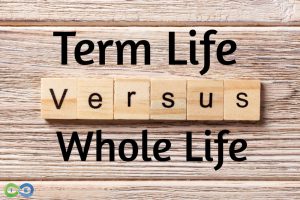Navigating the world of life insurance can be overwhelming, especially for beginners who are unfamiliar with the different types of policies and terminology. However, life insurance is an essential component of financial planning, providing peace of mind and financial protection for your loved ones. Whether you’re starting a family, buying a home, or simply seeking to safeguard your future, understanding the basics of life insurance can help you make informed decisions. This guide simplifies the process and walks you through everything you need to know to get started with life insurance.
What is Life Insurance?
At its core, life insurance is a contract between you and an insurance company. In exchange for regular premium payments, the insurer promises to pay a lump sum (the death benefit) to your beneficiaries upon your death. This financial support helps your loved ones cover expenses such as funeral costs, outstanding debts, and living expenses. The policy ensures that they are not burdened financially after your passing, offering a safety net for their future.
Why Do You Need Life Insurance?
Life insurance is crucial for anyone who has dependents or financial responsibilities. If you have a spouse, children, or other family members who rely on your income, life insurance provides the necessary financial support to maintain their standard of living. It can also help cover end-of-life expenses, such as funeral costs and any remaining debts. Furthermore, life insurance can be an integral part of your estate planning, ensuring your assets are protected and distributed according to your wishes.
Types of Life Insurance
Understanding the different types of life insurance is key to selecting the right policy for your needs. There are two primary categories of life insurance: term life and permanent life.
- Term Life Insurance
Term life insurance is the most straightforward and affordable option. It provides coverage for a specified term, usually ranging from 10 to 30 years. If you pass away during this term, your beneficiaries receive the death benefit. However, if the term expires and you are still alive, the policy ends with no payout. Term life is ideal for those who need coverage for a specific period, such as while paying off a mortgage or raising children. - Permanent Life Insurance
Permanent life insurance, including whole life and universal life, provides lifelong coverage as long as premiums are paid. In addition to the death benefit, these policies build cash value over time, which you can borrow against or withdraw. Permanent life insurance is more expensive than term life but offers long-term financial benefits and stability. It’s best suited for those who want to leave a legacy, accumulate wealth, or ensure lifelong coverage.
How Much Life Insurance Do You Need?
Determining how much life insurance you need depends on various factors, including your financial obligations, the number of dependents, and your long-term goals. A common rule of thumb is to have a policy that is 10 to 15 times your annual income. However, it’s essential to factor in additional expenses, such as mortgage payments, college tuition, and any outstanding debts. A life insurance calculator can help you assess your specific needs and provide a more accurate estimate.
How to Choose a Life Insurance Policy
Choosing the right life insurance policy involves several steps, starting with understanding your financial needs and goals. Here’s how to approach the process:
- Evaluate Your Financial Situation
Assess your current and future financial needs, including any outstanding debts, mortgages, and dependents who rely on your income. Consider what expenses your beneficiaries will need covered, such as childcare or college costs. This will help you determine the appropriate coverage amount. - Research Different Providers
Once you understand your coverage needs, it’s important to compare policies from different insurance providers. Research their reputation, financial stability, and customer reviews. Working with a licensed insurance agent can help you navigate the various options and find the best policy for your needs. - Choose the Right Type of Policy
Decide whether term life insurance or permanent life insurance is the best fit for your situation. Term life is ideal for those seeking affordable coverage for a set period, while permanent life insurance suits individuals looking for long-term protection and wealth-building opportunities. - Consider Riders for Extra Coverage
Life insurance policies often come with optional riders, which are additional benefits that can be added to your policy for an extra cost. Examples include critical illness coverage, accidental death riders, or disability riders. These can provide extra protection tailored to your unique needs.
Understanding Life Insurance Costs
The cost of life insurance, known as the premium, varies based on factors such as your age, health, lifestyle, and the type of policy you choose. Premiums tend to be lower when you’re younger and in good health. For example, if you’re in your 30s and non-smoker, you’ll likely pay much less than someone in their 50s or someone with pre-existing health conditions. To lower your premiums, consider maintaining a healthy lifestyle and choosing a term policy over a permanent one.
The Application Process
When applying for life insurance, you’ll need to complete an application form that includes questions about your health, lifestyle, and family medical history. You may also be required to undergo a medical exam, depending on the amount of coverage you’re seeking and the insurance company’s policies. This process helps the insurer assess the level of risk and determine your premium rate.
Review Your Life Insurance Regularly
Your life insurance needs may change over time due to life events such as marriage, the birth of children, or the purchase of a home. It’s important to regularly review and update your life insurance policy to ensure it aligns with your current financial situation and goals. You may need to increase your coverage as your family grows or adjust it if your children become financially independent.
Conclusion
Getting started with life insurance doesn’t have to be complicated. By understanding the basics, evaluating your needs, and choosing the right policy, you can ensure that your loved ones are financially protected, no matter what happens. Whether you opt for term life insurance for short-term coverage or permanent life insurance for lifelong protection, the right policy will provide peace of mind and security. Taking the time to educate yourself about life insurance today can provide a secure foundation for your family’s financial future.



